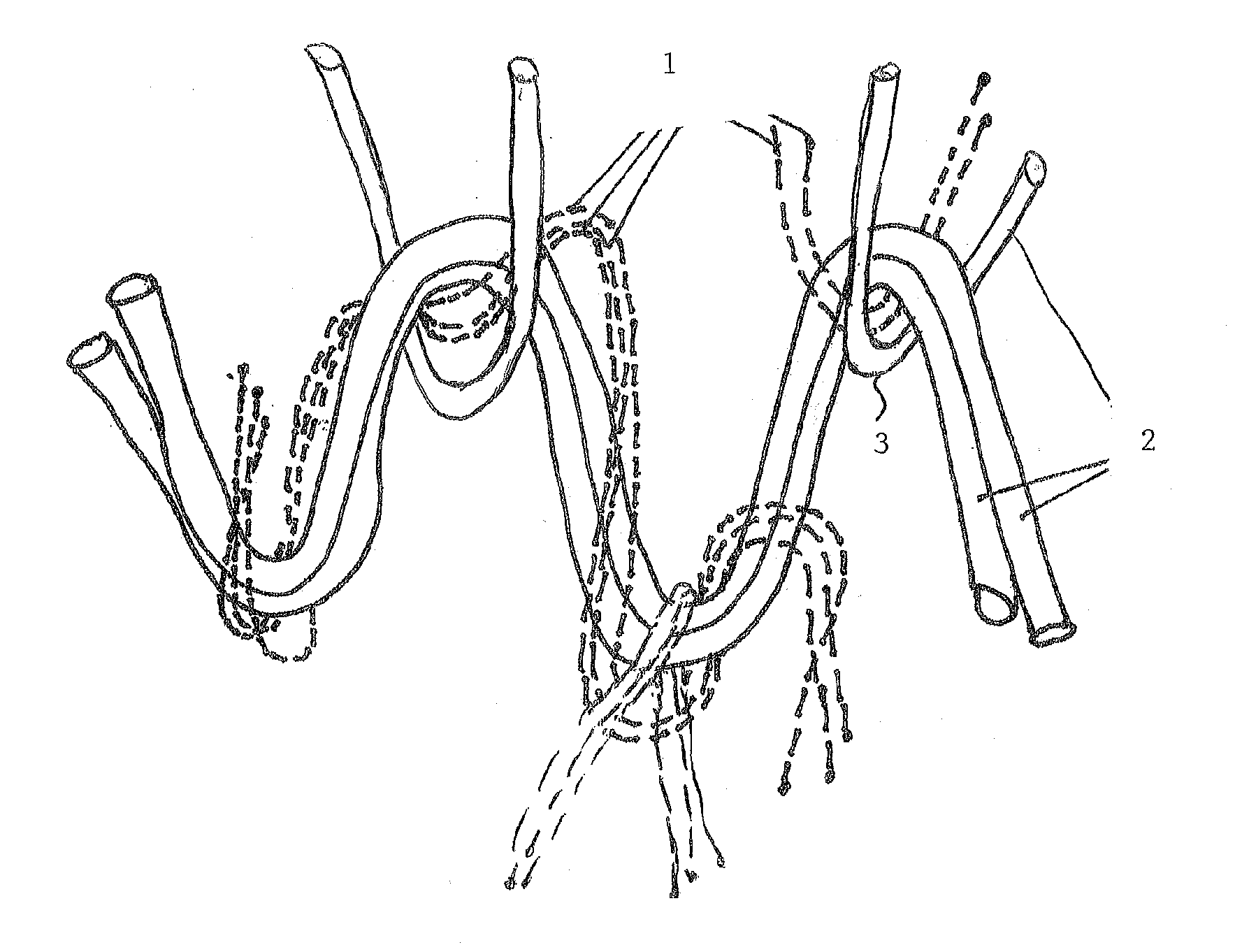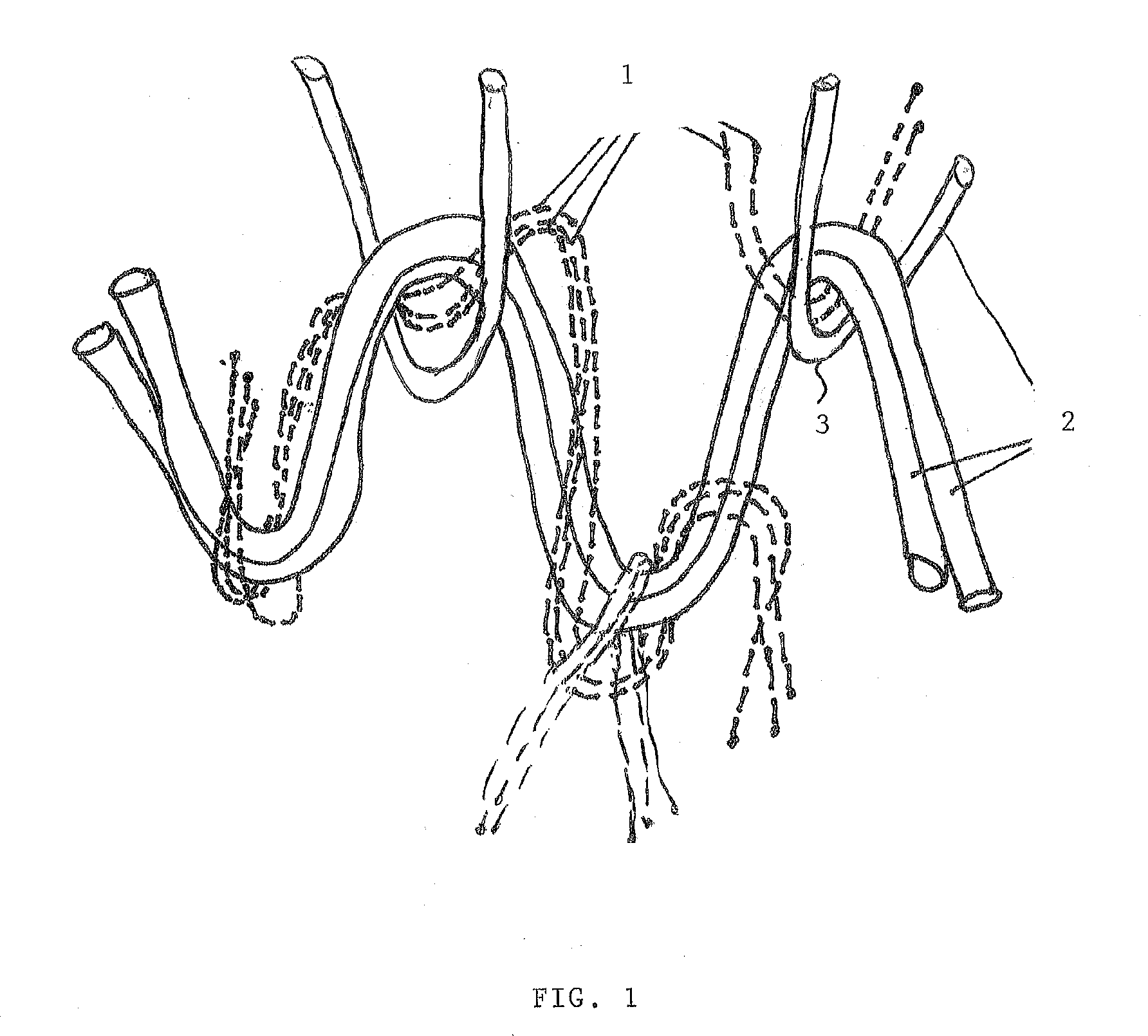Hybrid fabric
a fabric and hybrid technology, applied in the field of spacer fabric, can solve the problems of difficult control of mechanical and thermo-molding properties of crimped fibers, and loss of porosity of fabric,
- Summary
- Abstract
- Description
- Claims
- Application Information
AI Technical Summary
Benefits of technology
Problems solved by technology
Method used
Image
Examples
Embodiment Construction
[0013]It is the aim of the present invention to provide a hybrid fabric, which may be directly molded onto the patients' body, which shows good breathability to both moisture and heat after having been molded and which provides improved comfort to the patient while providing sufficient immobilization.
[0014]This is achieved according to the present invention with a hybrid fabric showing the technical features of the characterizing portion of the first claim.
[0015]Thereto, the hybrid fabric of this invention is characterized in that the hybrid fabric comprises[0016](1) a first network comprising the structural fibers,[0017](2) a second network comprising the thermo-formable fibers, the thermo-formable fibers comprising non-relaxed fibers made of a thermoplastic material, and[0018](3) a plurality of openings between the fibers of the first and second network, the hybrid fabric further being characterized in that the structural and thermo-formable fibers of respectively the first and se...
PUM
| Property | Measurement | Unit |
|---|---|---|
| Temperature | aaaaa | aaaaa |
| Temperature | aaaaa | aaaaa |
| Temperature | aaaaa | aaaaa |
Abstract
Description
Claims
Application Information
 Login to View More
Login to View More - R&D
- Intellectual Property
- Life Sciences
- Materials
- Tech Scout
- Unparalleled Data Quality
- Higher Quality Content
- 60% Fewer Hallucinations
Browse by: Latest US Patents, China's latest patents, Technical Efficacy Thesaurus, Application Domain, Technology Topic, Popular Technical Reports.
© 2025 PatSnap. All rights reserved.Legal|Privacy policy|Modern Slavery Act Transparency Statement|Sitemap|About US| Contact US: help@patsnap.com


